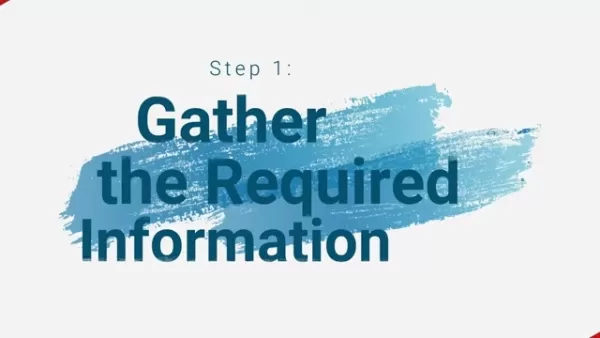AI Set to Overtake Spreadsheets as Top Business Reporting Tool: 6 Key Reasons
The buzz around artificial intelligence (AI) in the business world is louder than ever, with a whopping 83% of decision-makers planning to ramp up their AI investments in the coming year, according to Salesforce's recent research. It's clear that services organizations are not just dipping their toes in the water; they're diving headfirst into the world of AI and automation, scrutinizing their current tools to see how they can optimize business operations. In fact, a staggering majority of these organizations are already pouring resources into AI, and only a tiny 6% are sitting on the sidelines, with no plans to engage with the technology.
Generative AI is also making waves, with 24% of service employees already putting it to use. The benefits? Well, they're hard to ignore. Over 90% of organizations using AI report significant savings in both time and costs. The top five ways AI is transforming service include customer-facing intelligent assistants, automated summaries and reports, service responses, agent-facing intelligent assistants, and intelligent offers and recommendations. And it's not just service; AI is making strides in forecasting and reporting too, particularly in professional services, where 93% of professionals in AI-investing organizations say the tech is a game-changer for efficiency.

Joe Thomas, Global Analytics Evangelist, shares his insights on the shift from spreadsheets to AI in professional services. He points out that spreadsheets have been the go-to tool for everything from billable utilization calculations to revenue forecasting. But as the complexity of data grows, these old-school tools are struggling to keep up. Joe predicts that by 2027, AI will take over from spreadsheets as the go-to method for utilization reporting and revenue forecasting, and it might happen even sooner. Here's why:
Spreadsheets Are Not the Answer
Let's face it: spreadsheets are relics from a bygone era. They weren't built to handle the volume and variety of data that modern services businesses generate. Trying to forecast with spreadsheets today involves piecing together data from various systems, which is not only time-consuming but also riddled with errors. A recent Forrester survey of over 600 professional services leaders highlighted that four of the top five challenges they face are linked to spreadsheets. AI, on the other hand, works tirelessly, processing live data to provide real-time insights without the hassle of manual updates.
Utilization Is a Moving Target
In professional services, keeping an eye on utilization rates is crucial, with nearly all organizations believing they can improve them. But traditional reporting methods only show what's happened, not what's coming. AI changes this by analyzing real-time data, predicting utilization dips before they occur, and allowing leaders to take proactive measures. For instance, AI can alert managers when a high-billable consultant is about to finish a project without a new one lined up, enabling timely action.
Forecasting Revenue Requires Nuance
Forecasting services revenue is far from simple; it involves juggling multiple variables like project win rates, client behavior, and market conditions. Spreadsheets struggle with this complexity, often relying on outdated data. AI, however, excels at processing these variables, learning from past experiences, and continuously refining forecasts. It can even spot patterns that humans might miss, making it a far superior tool for nuanced forecasting.
Services Teams Don't Have Time
Services operations leads spend a significant portion of their week chasing, cleaning, and validating data just to produce reports. This manual process is neither sustainable nor efficient. With AI integrated into operational systems like PSA, ERP, and CRM, data flows seamlessly, and key metrics can be accessed through natural language queries, freeing up time for more strategic tasks.
AI Brings Insights
While spreadsheets can tell you what happened, AI goes further by explaining why it happened and predicting what might happen next. Modern AI tools use explainable machine learning to provide context with predictions, helping leaders understand the reasons behind utilization dips or revenue forecasts. Plus, AI can run "what if?" scenarios, offering solutions to potential problems before they arise.
Spreadsheets Are a Compliance Risk
Inaccurate forecasts can lead to serious consequences like missed earnings targets or blown budgets. Spreadsheets are difficult to audit and easy to manipulate, posing a compliance risk. AI-based platforms, however, offer full data lineage and audit trails, making them a safer choice for regulated industries.
Where the Industry Goes Next
Leading PSA, CRM, and ERP vendors are already integrating AI into their forecasting and planning tools. The 80% of firms still relying on spreadsheets for planning and forecasting will soon find themselves at a competitive disadvantage. The future belongs to those who view forecasting and reporting as an intelligent, autonomous capability.
To fully harness the power of AI, organizations need to focus on data and AI literacy. Leaders must invest in integration strategies and employee training to ensure AI has access to reliable data. The era of spreadsheet dominance is fading, and AI is stepping in to make business processes smarter and more predictive. Professional services firms that embrace this shift will gain a strategic edge that can't be easily replicated.
This article was co-authored by Joe Thomas, enterprise solution director and global analytics evangelist at Certinia.
Related article
 AI-Powered Cover Letters: Expert Guide for Journal Submissions
In today's competitive academic publishing environment, crafting an effective cover letter can make the crucial difference in your manuscript's acceptance. Discover how AI-powered tools like ChatGPT can streamline this essential task, helping you cre
AI-Powered Cover Letters: Expert Guide for Journal Submissions
In today's competitive academic publishing environment, crafting an effective cover letter can make the crucial difference in your manuscript's acceptance. Discover how AI-powered tools like ChatGPT can streamline this essential task, helping you cre
 US to Sanction Foreign Officials Over Social Media Regulations
US Takes Stand Against Global Digital Content Regulations
The State Department issued a sharp diplomatic rebuke this week targeting European digital governance policies, signaling escalating tensions over control of online platforms. Secretary Marco
US to Sanction Foreign Officials Over Social Media Regulations
US Takes Stand Against Global Digital Content Regulations
The State Department issued a sharp diplomatic rebuke this week targeting European digital governance policies, signaling escalating tensions over control of online platforms. Secretary Marco
 Ultimate Guide to AI-Powered YouTube Video Summarizers
In our information-rich digital landscape, AI-powered YouTube video summarizers have become indispensable for efficient content consumption. This in-depth guide explores how to build a sophisticated summarization tool using cutting-edge NLP technolog
Comments (1)
0/200
Ultimate Guide to AI-Powered YouTube Video Summarizers
In our information-rich digital landscape, AI-powered YouTube video summarizers have become indispensable for efficient content consumption. This in-depth guide explores how to build a sophisticated summarization tool using cutting-edge NLP technolog
Comments (1)
0/200
![KeithHarris]() KeithHarris
KeithHarris
 July 23, 2025 at 12:59:29 AM EDT
July 23, 2025 at 12:59:29 AM EDT
AI replacing spreadsheets? That's wild! I love how it can crunch numbers faster than my old calculator, but I’m kinda worried if it’ll make my job obsolete. 😅 Still, those six reasons sound super convincing—can’t wait to see how this plays out in my office!


 0
0
The buzz around artificial intelligence (AI) in the business world is louder than ever, with a whopping 83% of decision-makers planning to ramp up their AI investments in the coming year, according to Salesforce's recent research. It's clear that services organizations are not just dipping their toes in the water; they're diving headfirst into the world of AI and automation, scrutinizing their current tools to see how they can optimize business operations. In fact, a staggering majority of these organizations are already pouring resources into AI, and only a tiny 6% are sitting on the sidelines, with no plans to engage with the technology.
Generative AI is also making waves, with 24% of service employees already putting it to use. The benefits? Well, they're hard to ignore. Over 90% of organizations using AI report significant savings in both time and costs. The top five ways AI is transforming service include customer-facing intelligent assistants, automated summaries and reports, service responses, agent-facing intelligent assistants, and intelligent offers and recommendations. And it's not just service; AI is making strides in forecasting and reporting too, particularly in professional services, where 93% of professionals in AI-investing organizations say the tech is a game-changer for efficiency.
Joe Thomas, Global Analytics Evangelist, shares his insights on the shift from spreadsheets to AI in professional services. He points out that spreadsheets have been the go-to tool for everything from billable utilization calculations to revenue forecasting. But as the complexity of data grows, these old-school tools are struggling to keep up. Joe predicts that by 2027, AI will take over from spreadsheets as the go-to method for utilization reporting and revenue forecasting, and it might happen even sooner. Here's why:
Spreadsheets Are Not the Answer
Let's face it: spreadsheets are relics from a bygone era. They weren't built to handle the volume and variety of data that modern services businesses generate. Trying to forecast with spreadsheets today involves piecing together data from various systems, which is not only time-consuming but also riddled with errors. A recent Forrester survey of over 600 professional services leaders highlighted that four of the top five challenges they face are linked to spreadsheets. AI, on the other hand, works tirelessly, processing live data to provide real-time insights without the hassle of manual updates.
Utilization Is a Moving Target
In professional services, keeping an eye on utilization rates is crucial, with nearly all organizations believing they can improve them. But traditional reporting methods only show what's happened, not what's coming. AI changes this by analyzing real-time data, predicting utilization dips before they occur, and allowing leaders to take proactive measures. For instance, AI can alert managers when a high-billable consultant is about to finish a project without a new one lined up, enabling timely action.
Forecasting Revenue Requires Nuance
Forecasting services revenue is far from simple; it involves juggling multiple variables like project win rates, client behavior, and market conditions. Spreadsheets struggle with this complexity, often relying on outdated data. AI, however, excels at processing these variables, learning from past experiences, and continuously refining forecasts. It can even spot patterns that humans might miss, making it a far superior tool for nuanced forecasting.
Services Teams Don't Have Time
Services operations leads spend a significant portion of their week chasing, cleaning, and validating data just to produce reports. This manual process is neither sustainable nor efficient. With AI integrated into operational systems like PSA, ERP, and CRM, data flows seamlessly, and key metrics can be accessed through natural language queries, freeing up time for more strategic tasks.
AI Brings Insights
While spreadsheets can tell you what happened, AI goes further by explaining why it happened and predicting what might happen next. Modern AI tools use explainable machine learning to provide context with predictions, helping leaders understand the reasons behind utilization dips or revenue forecasts. Plus, AI can run "what if?" scenarios, offering solutions to potential problems before they arise.
Spreadsheets Are a Compliance Risk
Inaccurate forecasts can lead to serious consequences like missed earnings targets or blown budgets. Spreadsheets are difficult to audit and easy to manipulate, posing a compliance risk. AI-based platforms, however, offer full data lineage and audit trails, making them a safer choice for regulated industries.
Where the Industry Goes Next
Leading PSA, CRM, and ERP vendors are already integrating AI into their forecasting and planning tools. The 80% of firms still relying on spreadsheets for planning and forecasting will soon find themselves at a competitive disadvantage. The future belongs to those who view forecasting and reporting as an intelligent, autonomous capability.
To fully harness the power of AI, organizations need to focus on data and AI literacy. Leaders must invest in integration strategies and employee training to ensure AI has access to reliable data. The era of spreadsheet dominance is fading, and AI is stepping in to make business processes smarter and more predictive. Professional services firms that embrace this shift will gain a strategic edge that can't be easily replicated.
This article was co-authored by Joe Thomas, enterprise solution director and global analytics evangelist at Certinia.
 AI-Powered Cover Letters: Expert Guide for Journal Submissions
In today's competitive academic publishing environment, crafting an effective cover letter can make the crucial difference in your manuscript's acceptance. Discover how AI-powered tools like ChatGPT can streamline this essential task, helping you cre
AI-Powered Cover Letters: Expert Guide for Journal Submissions
In today's competitive academic publishing environment, crafting an effective cover letter can make the crucial difference in your manuscript's acceptance. Discover how AI-powered tools like ChatGPT can streamline this essential task, helping you cre
 US to Sanction Foreign Officials Over Social Media Regulations
US Takes Stand Against Global Digital Content Regulations
The State Department issued a sharp diplomatic rebuke this week targeting European digital governance policies, signaling escalating tensions over control of online platforms. Secretary Marco
US to Sanction Foreign Officials Over Social Media Regulations
US Takes Stand Against Global Digital Content Regulations
The State Department issued a sharp diplomatic rebuke this week targeting European digital governance policies, signaling escalating tensions over control of online platforms. Secretary Marco
 Ultimate Guide to AI-Powered YouTube Video Summarizers
In our information-rich digital landscape, AI-powered YouTube video summarizers have become indispensable for efficient content consumption. This in-depth guide explores how to build a sophisticated summarization tool using cutting-edge NLP technolog
Ultimate Guide to AI-Powered YouTube Video Summarizers
In our information-rich digital landscape, AI-powered YouTube video summarizers have become indispensable for efficient content consumption. This in-depth guide explores how to build a sophisticated summarization tool using cutting-edge NLP technolog
 July 23, 2025 at 12:59:29 AM EDT
July 23, 2025 at 12:59:29 AM EDT
AI replacing spreadsheets? That's wild! I love how it can crunch numbers faster than my old calculator, but I’m kinda worried if it’ll make my job obsolete. 😅 Still, those six reasons sound super convincing—can’t wait to see how this plays out in my office!


 0
0





























